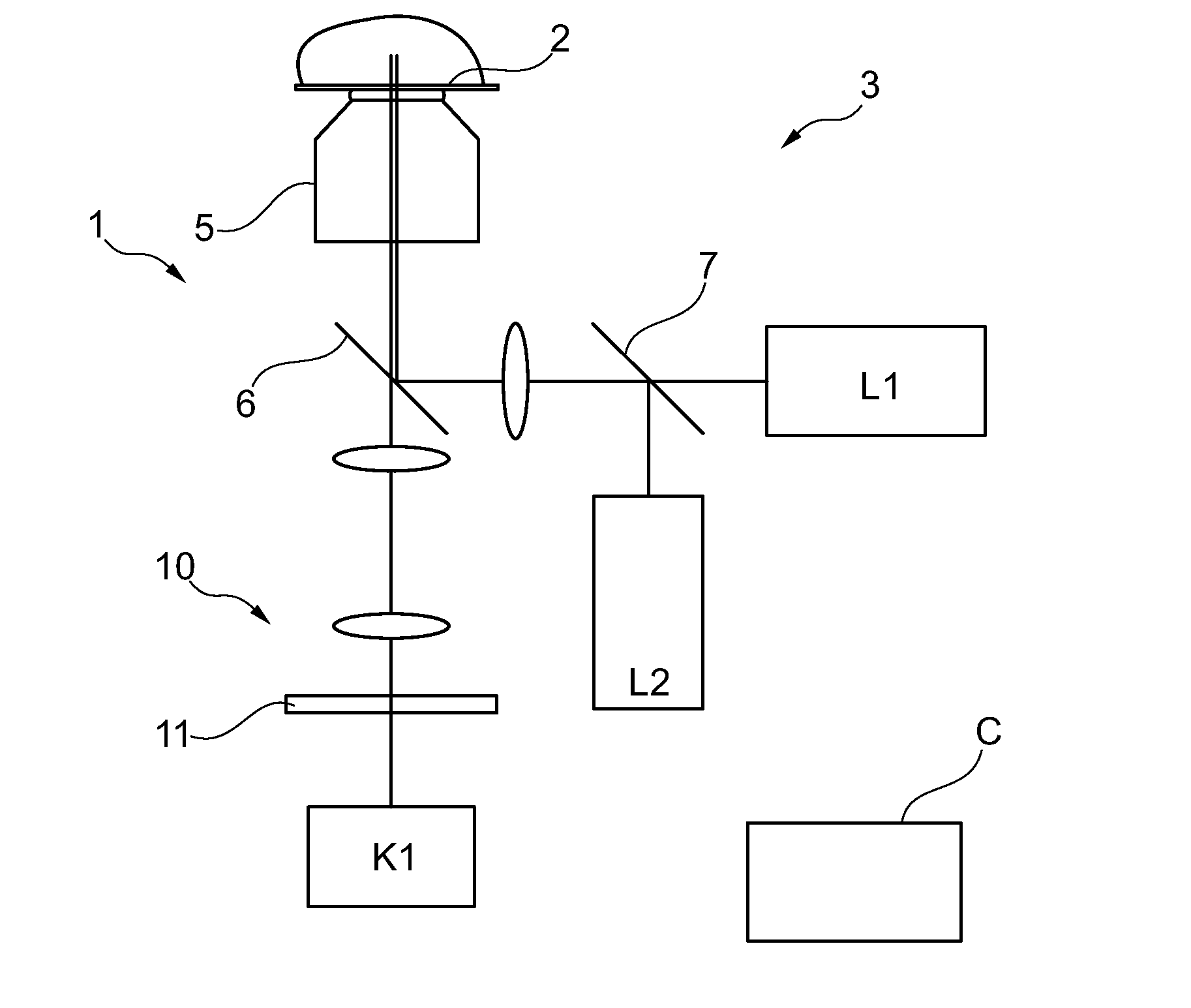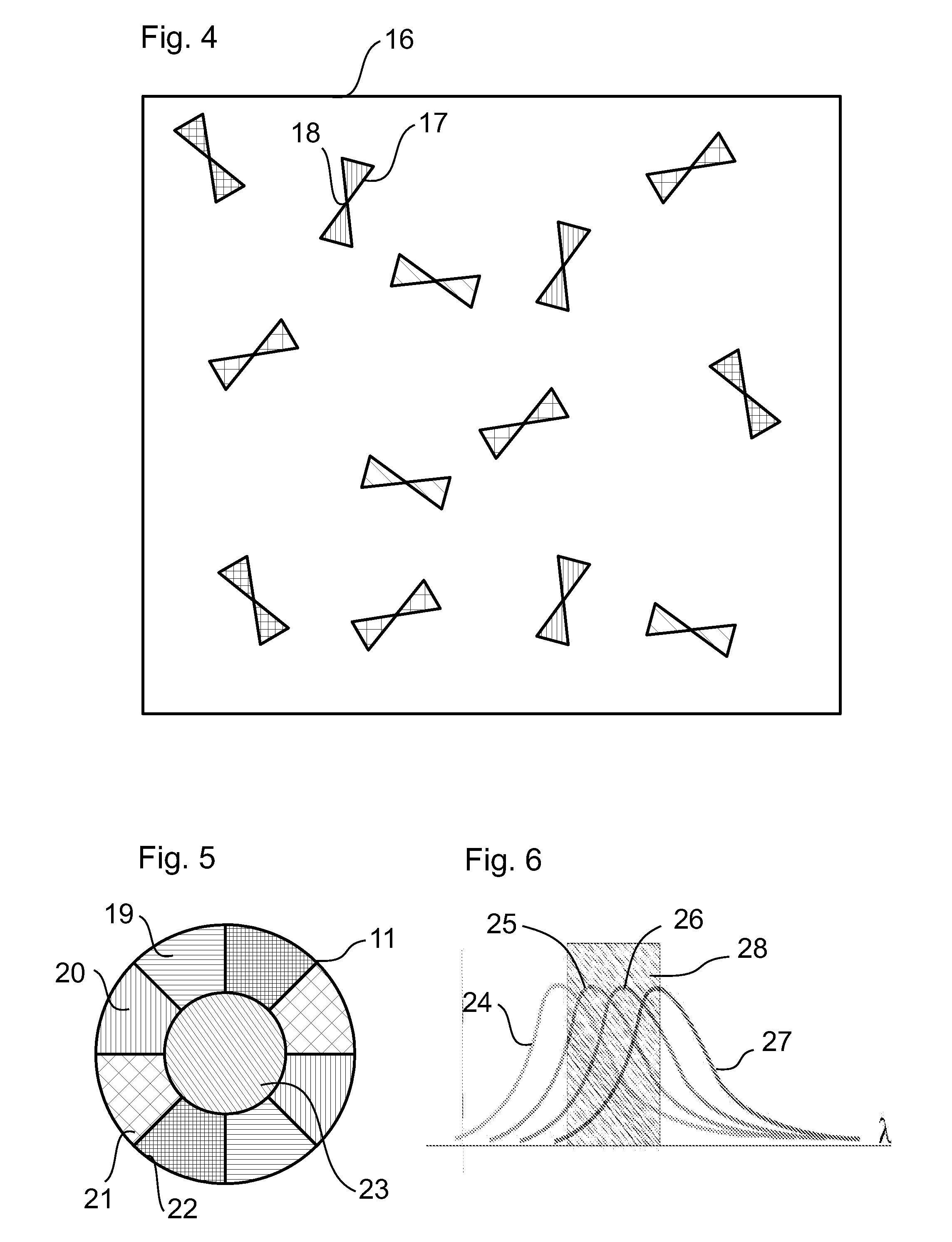Microscope and method for wavelength-selective and high spatial resolving microscopy
- Summary
- Abstract
- Description
- Claims
- Application Information
AI Technical Summary
Benefits of technology
Problems solved by technology
Method used
Image
Examples
Example
[0035]FIG. 1 schematically shows a fluorescence microscope 1 the operation of which is controlled by a control device C. The control device is connected to the elements of the microscope 1 via connections that are not shown, in particular to laser source(s) and camera. Elements or components which correspond functionally and / or structurally to elements or components which have already been explained with reference to the microscope 100 of FIG. 8, thus in respect of their function or structure correspond to the state of the art, are provided with the same reference numbers in the representation of FIG. 1 Their description therefore need not be repeated.
[0036]The microscope 1 of FIG. 1 comprises, in addition to the illumination beam path 3, an imaging beam path 10 which, however, as will he explained later, functions without spectral division into several colour channels. Therefore, only a single camera K1 is required. The imaging of the specimen is guided through a spectrally selecti...
PUM
 Login to view more
Login to view more Abstract
Description
Claims
Application Information
 Login to view more
Login to view more - R&D Engineer
- R&D Manager
- IP Professional
- Industry Leading Data Capabilities
- Powerful AI technology
- Patent DNA Extraction
Browse by: Latest US Patents, China's latest patents, Technical Efficacy Thesaurus, Application Domain, Technology Topic.
© 2024 PatSnap. All rights reserved.Legal|Privacy policy|Modern Slavery Act Transparency Statement|Sitemap



